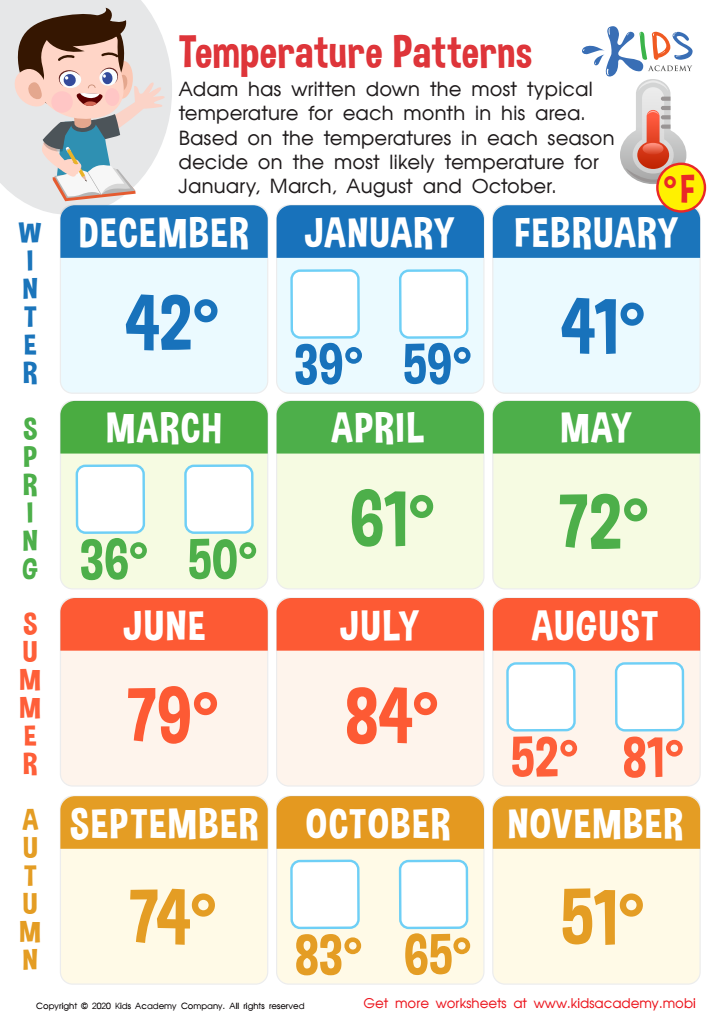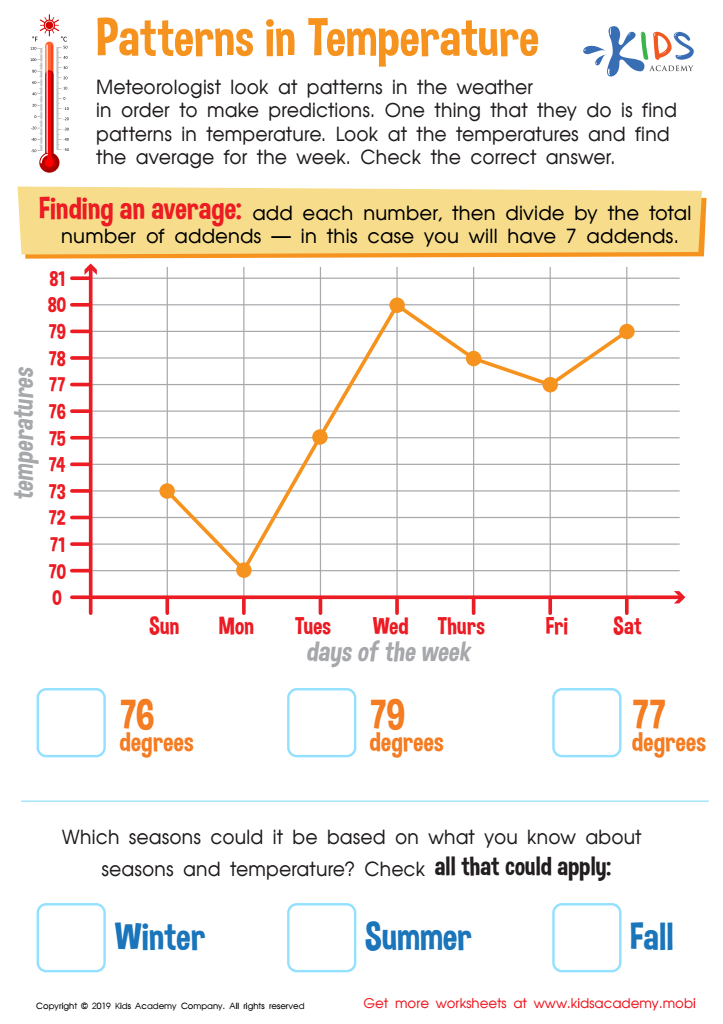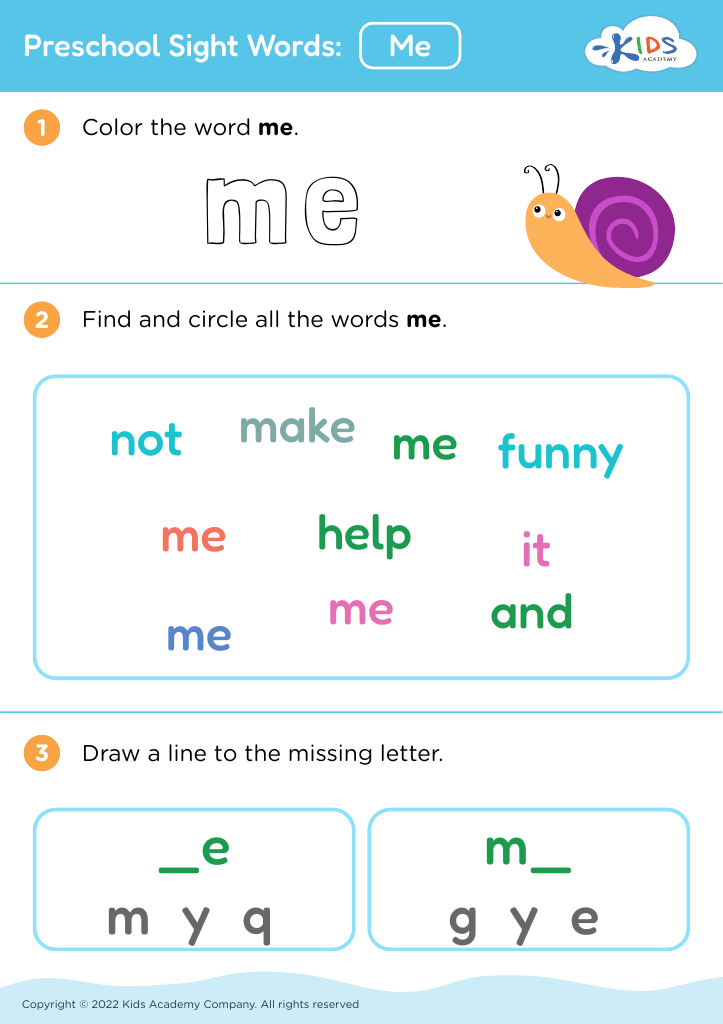Reading thermometers Worksheets for Ages 3-8
4 filtered results
-
From - To
Discover our engaging "Reading Thermometers Worksheets for Ages 3-8" designed to make learning fun and interactive. Perfect for early learners, these worksheets offer colorful visuals and simple exercises that help children understand how to read a thermometer accurately. From identifying temperatures to practicing their observation skills, kids gain valuable scientific knowledge in a playful manner. Ideal for both classroom settings and at-home practice, our worksheets cater to different learning paces, ensuring every child builds confidence while mastering this essential life skill. Equip your child with the tools they need to explore the world around them with ease and curiosity.


Temperature Patterns Worksheet


Reading Thermometers Printable


Patterns in Temperature Worksheet
Reading thermometers is a vital skill that parents and teachers should prioritize when educating children aged 3-8. Firstly, understanding how to read a thermometer provides a practical introduction to numerical concepts and measurement, aligning well with early math curriculum goals. It teaches children numbers, sequences, and the idea of intervals, fostering their numerical literacy in a hands-on way.
Secondly, thermometer reading introduces basic scientific principles. It helps kids grasp the concept of temperature, a fundamental environmental factor. This can spur curiosity about weather, seasons, and the impacts of temperature on daily life, laying the groundwork for future scientific exploration.
Moreover, reading a thermometer is crucial for safety and self-care. Children learn to recognize and respond to bodily symptoms, alarming adults when temperatures signal illness. This fosters greater autonomy and teaches the importance of health monitoring from a young age.
Additionally, incorporating thermometer use in activities can strengthen fine motor skills and hand-eye coordination, as children need to hold and read the device accurately.
Lastly, this practical life skill encourages responsibility and awareness. When children independently engage in simple, real-world tasks like reading a thermometer, it builds confidence and a sense of competence, which are valuable traits for their overall development. In these ways, parents and teachers can significantly support a child's holistic growth by encouraging the understanding of thermometers.
 Assign to My Students
Assign to My Students
















